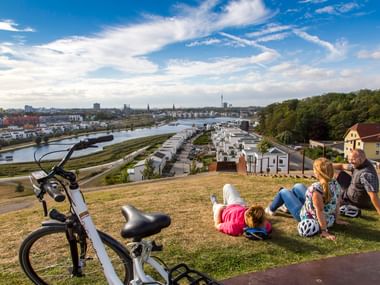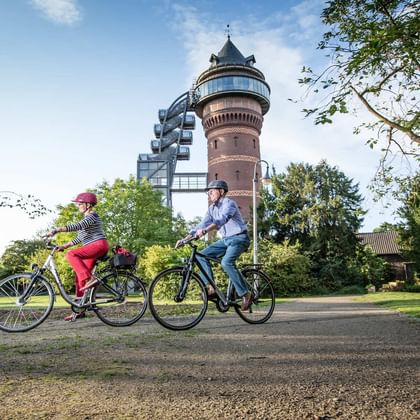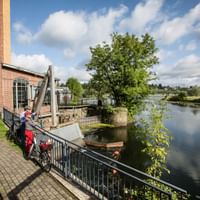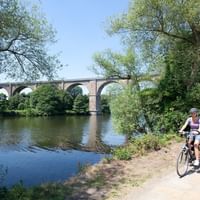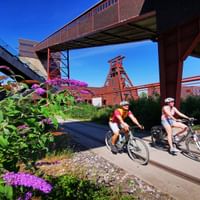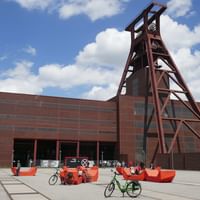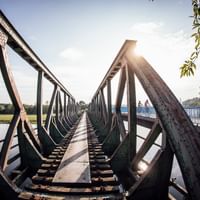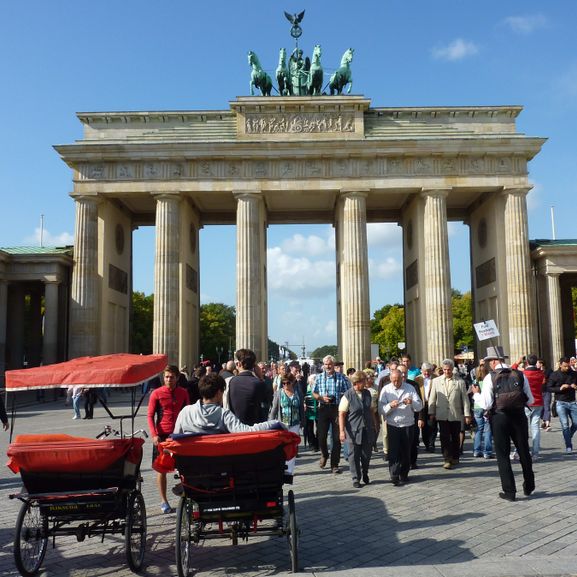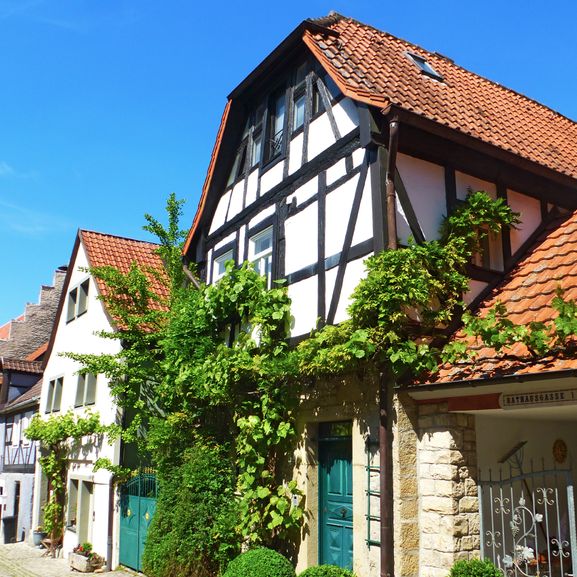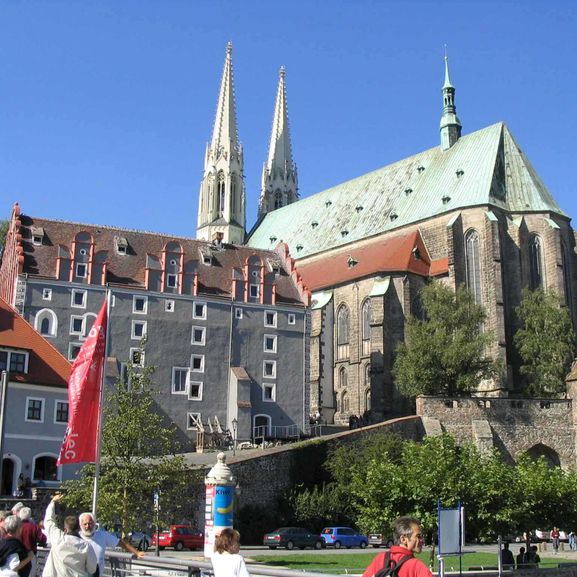Black. Green. Gold. the Ruhr region
Cycling vacation in the ruhr region
With 5 million inhabitants and an area of around 4435 square kilometers, the Ruhr area is the largest metropolitan area in Germany and the fifth largest in Europe. It is named after the river Ruhr. With its surrounding area, it forms the Rhine-Ruhr metropolitan region, in which over 10 million people live. The Ruhr area grew on coal. Almost 200 years ago, the first lumps of black gold were brought to light on the slopes of the Ruhr. Within a few decades, more than 220 mines were built, by 1850 there were 300, later a total of around 3200. Today coal mining is history, the region is subject to a huge structural change. Leisure, sport and greenery are increasingly coming to the fore. An infinite number of bike paths have been built and many bike tours have been developed. We offer the beautiful bike tour along the Ruhr from the source to the mouth and a highly interesting round trip through the Ruhr region.
Through magnificent greenery along the Ruhr
Throughout the Ruhr region, monumental industrial monuments, now serving other purposes and ready for surprises, stand lined by the green ribbon around the Ruhr, Lippe, Rhine and Emscher rivers. Hundreds of kilometers of well-maintained bike paths crisscross the region. On former railroad tracks, riverside paths, park trails or even forest paths, the route is mostly ascent-free.
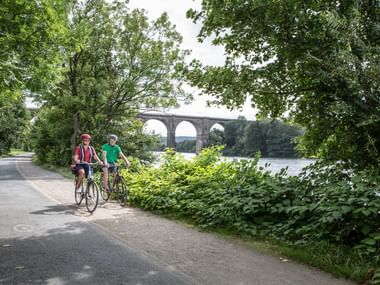
Industrial buildings - pearls in the district
It should not be called a "pearl in the district", but rather "pearls". There is a wealth of interesting things to see and experience in the Ruhr region, which was once considered gray. You will pass by smelting works and blast furnaces, coke and coal, collieries and Zollverein, the so-called anchor points and actual sights of the Ruhr metropolis, where the "black gold", coal, was once mined. The buildings have been repurposed: the Museum of German Inland Navigation, for example, is housed in a former Art Nouveau indoor swimming pool. Speaking of baths, if you feel like diving, you should turn off to the diving gasometer with underwater bicycle in the Duisburg North Landscape Park.
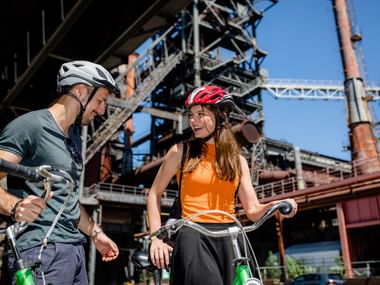
Culture in the coalfield
The visitor center of the Route of Industrial Culture at the Zollverein XII coal mine in Essen, probably the most impressive of all and today supposedly the most beautiful in the world, is an absolute must. Shaft 12, the "Eiffel Tower of the Ruhr," is considered a landmark of the region. In December 2001, the Bauhaus-style colliery was awarded the title of "World Heritage Site" by UNESCO. Stories of coal and its extraction from depths of up to 640 meters make the visit absolutely fascinating. Former miners are also present and are happy to tell you more, for example about their hobby of breeding pigeons, a real Pott passion.

Currywurst and culinary delights - La dolce vita in the Pott
Drinking halls and curry sausage stands can be found everywhere. This is pure Pott culture. So, once currywurst with french fries or "just" french fries red and white, as ordered in style with mayonnaise and ketchup. - Once the center of the German grain trade, Duisburg's inner harbor is now hip with its maritime flair and plenty of pubs in former warehouse buildings. Some of the restaurants even have floating terraces. Perfect for a "Pilsken" with a view of the water. La dolce vita in the middle of the Pott.
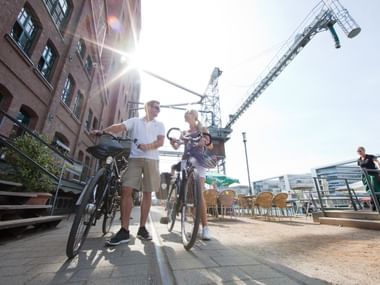
Nature on heap
No mountains, my ass! The green Schurenbach slag heap can be seen from afar: At the top of the black-leaved hilltop stands Richard Serra's giant "Slab for the Ruhr". The view is magnificent. In general, one could say: It is so green in the Ruhr area. Meadows, forests and birdsong line the bike path. The Ruhr was once the busiest river in Europe for coal transport. Today, from Hattingen, you cycle along the paved Leinepfad directly along the river. Every now and then you cycle over a Ruhr bridge or past a marina. Green and urban regions alternate.
